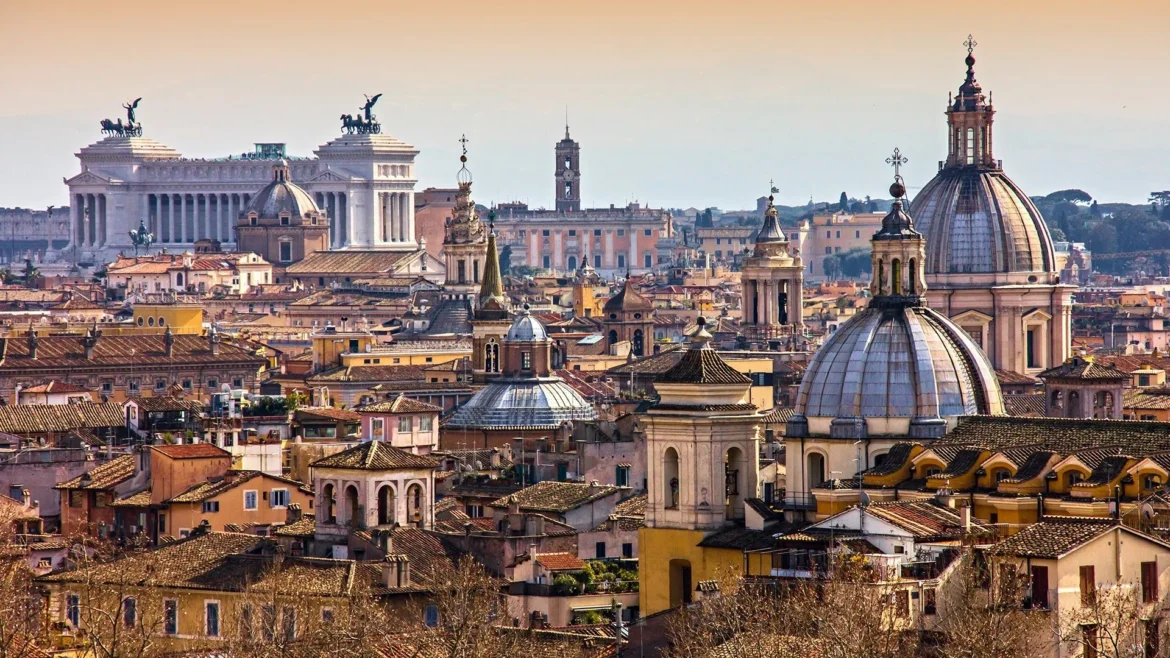Rome, often called “The Eternal City,” is one of the most historically rich and culturally significant cities in the world. As the capital of Italy and the heart of the ancient Roman Empire, Rome’s legacy spans thousands of years and has profoundly shaped Western civilization in terms of law, governance, art, architecture, religion, and culture. Today, it stands as a vibrant metropolis where ancient ruins coexist with modern life, making it a fascinating destination for millions of visitors each year.
Historical Significance
Rome’s history stretches back more than 2,700 years, traditionally founded in 753 BCE according to Roman legend by Romulus and Remus, twin brothers who were said to have been raised by a she-wolf. This myth highlights the city’s deep connection to legend and mythology. Archaeological evidence confirms that the area was inhabited long before its legendary founding, with settlements emerging around the Palatine Hill and along the Tiber River.
Rome grew from a small settlement into a powerful kingdom, then a republic, and finally an empire that controlled vast territories across Europe, North Africa, and the Middle East. The Roman Republic, established in 509 BCE, was notable for its early form of representative government and legal innovations, including the development of Roman law, which remains influential in modern legal systems around the world.
The Roman Empire, starting with Emperor Augustus in 27 BCE, marked a period of unprecedented expansion and cultural flourishing. At its height, Rome was the political and cultural center of an empire that spread across three continents. The city itself was a marvel of engineering and urban planning, featuring iconic structures such as the Colosseum, Roman Forum, Pantheon, and aqueducts that supplied fresh water. These monuments symbolize the city’s grandeur and the Romans’ architectural ingenuity.
Architectural and Cultural Landmarks
One cannot talk about Rome without mentioning its incredible landmarks. The Colosseum, also known as the Flavian Amphitheatre, is arguably the most famous symbol of Rome. Built between 70-80 CE, it was the largest amphitheater in the Roman world and hosted gladiatorial contests, public spectacles, and dramas. Despite suffering damage over the centuries from earthquakes and stone-robbers, the Colosseum remains a powerful reminder of Rome’s imperial past and is one of the New Seven Wonders of the World.
Nearby lies the Roman Forum, once the bustling center of political, religious, and social life in ancient Rome. The ruins here include temples, basilicas, and public spaces where Romans gathered for elections, public speeches, and religious ceremonies. Walking through the Forum today offers a tangible connection to the daily lives of ancient Romans.
The Pantheon, originally built as a temple to all Roman gods, is another architectural masterpiece. Its large dome, with a central oculus that lets in natural light, is a testament to Roman engineering. Remarkably well-preserved, the Pantheon was converted into a Christian church and continues to be used for worship today.
Rome’s Vatican City, an independent city-state within Rome, is the spiritual and administrative center of the Roman Catholic Church and home to the Pope. The Vatican houses St. Peter’s Basilica, the largest church in the world, and the Vatican Museums, which display a vast collection of art, including Michelangelo’s Sistine Chapel ceiling frescoes. The Vatican’s religious, artistic, and cultural treasures attract millions of pilgrims and tourists annually.
The Renaissance and Baroque Influence
After the fall of the Roman Empire in the 5th century CE, Rome went through centuries of political turmoil and decline, but it experienced a remarkable revival during the Renaissance. From the 14th to the 17th centuries, Rome became a center for arts, learning, and culture, attracting great artists such as Michelangelo, Raphael, and Bernini. These masters contributed to the city’s stunning churches, palaces, fountains, and sculptures.
Bernini’s Fountain of the Four Rivers in Piazza Navona, Michelangelo’s design of St. Peter’s Basilica dome, and Raphael’s frescoes in the Vatican Palace are just a few examples of Rome’s artistic heritage. The Baroque period further enriched the city with grandiose architecture and public spaces designed to inspire awe and religious devotion.
Modern Rome
Today, Rome is a bustling metropolis with a population of nearly three million people. It serves as Italy’s political, cultural, and economic capital. Modern Rome balances its historical identity with contemporary life — offering vibrant neighborhoods, world-class cuisine, fashion, and entertainment.
Rome’s cobblestone streets are lined with cafes where locals enjoy espresso and pasta, markets selling fresh produce and artisanal goods, and piazzas where street performers entertain crowds. The city’s culinary tradition, rooted in simple yet flavorful dishes such as carbonara, cacio e pepe, and supplì, delights both residents and visitors.
The city is also a hub for education and research, hosting numerous universities and institutes. It is a center for film and media, with Cinecittà Studios having produced many famous movies.
Tourism and Preservation
Rome is one of the most visited cities in the world, drawing tourists fascinated by its history, art, and culture. Managing the preservation of its ancient sites while accommodating millions of visitors presents ongoing challenges. Conservation efforts aim to protect monuments from pollution, erosion, and the wear caused by mass tourism.
Visitors can explore Rome’s diverse districts, from the historic center with its ancient ruins and Renaissance palaces to the trendy neighborhoods of Trastevere and Monti, known for their lively atmosphere and local character.
Conclusion
Rome’s unique blend of ancient history, artistic achievement, religious significance, and vibrant modern life makes it a truly exceptional city. It is a living museum where every corner tells a story, and its enduring legacy continues to influence the world today. From its legendary beginnings to its role as the capital of Italy, Rome remains “The Eternal City” — a symbol of human creativity, resilience, and culture across millennia.

